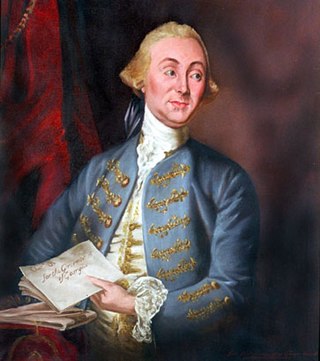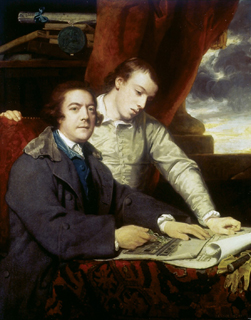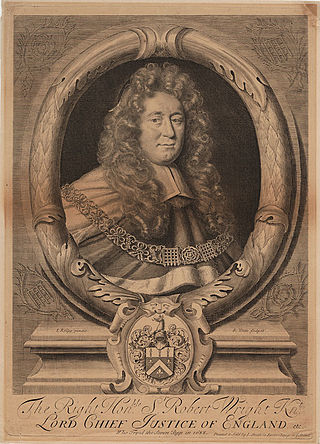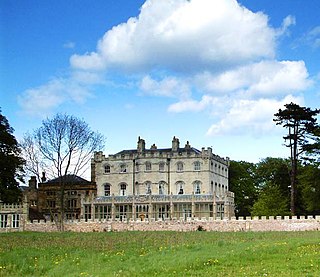
Elizabeth Cavendish, later Elizabeth Talbot, Countess of Shrewsbury, known as Bess of Hardwick, of Hardwick Hall, Derbyshire, was a notable figure of Elizabethan English society. By a series of well-made marriages, she rose to the highest levels of English nobility and became enormously wealthy. Bess was reportedly a shrewd businesswoman, increasing her assets with business interests including mines and glass-making workshops.

Sedgefield is a market town and civil parish in County Durham, England. It had a population of 5,211 as at the 2011 census. It has the only operating racecourse in County Durham.

James Wright was a colonial lawyer and jurist who was the last British Royal Governor of the Province of Georgia. He was the only Royal Governor of the Thirteen Colonies to regain control of his colony during the American Revolutionary War.
Castle Eden is a village in County Durham, in England. The population of the parish at the 2011 census was 642. It is situated a short distance to the south of Peterlee, Wingate, Hutton Henry, the A19 and Castle Eden Dene. The village is famous for the former Castle Eden Brewery which was home of the famous Castle Eden Ale; most of it was demolished in 2003 for a new housing estate and only the main front building remains today. This is a listed building and is now managed office space with a popular Italian restaurant. The A19 used to run through the village until it was bypassed in the 1970s. The deep and impressive nearby dene extends all the way to the sea, and its many yew trees are a particular feature where they find the dolomite soil advantageous.

James Paine (1717–1789) was an English architect. He worked on number of country houses such as Chatsworth House, Thorndon Hall and Kedleston Hall.

Matthew Wren was an influential English clergyman, bishop and scholar.

Tring Park Mansion or Mansion House, Tring Park, is a large country house in Tring, Hertfordshire. The house, as "Tring Park", was used, and from 1872 owned, by members of the Rothschild family from 1838 to 1945.

Pishiobury, sometimes spelled Pishobury, was a manor and estate in medieval Sawbridgeworth, Hertfordshire. Its denomination as "Pishiobury" only emerged in the mid to late 19th century.
Sedgefield Racecourse is an English left-handed horse racing course, used for jump racing. It is owned by Arena Racing Company and located close to the town of Sedgefield, County Durham.

Sir Robert Wright was an English judge and Chief Justice of the King's Bench 1687–89.

Wroxall Abbey is a substantial Victorian mansion house situated at Wroxall, Warwickshire which was converted for use as a hotel, spa, wedding venue and conference centre. It is a Grade II listed building.

Walworth Castle is an 11th-century castle, situated at Walworth, near Darlington, County Durham, England. It is a Grade 1 listed building. It was completed around 1600, probably by Thomas Holt for Thomas Jenison. It stands on the site of a former manor house or castle built in the 12th century by the Hansard family. The estate passed through the hands of the Ayscoughs and Aylmers besides the Hansards and Jenisons, and became a prisoner-of-war camp during World War II and then a girls' boarding school after the war. It has been a hotel since 1981.

Beamish Hall is a mid-18th-century country house, now converted to a hotel, which stands in 24 acres (97,000 m2) of grounds near the town of Stanley, County Durham. It is a Grade II* listed building.

Hardwick House was a manor house near Bury St Edmunds, Suffolk, owned by Sir Robert Drury, Speaker of the House of Commons, of Hawstead Place. It was subsequently purchased in the seventeenth century by Royalist Robert Cullum, a former Sheriff of London. Experts in Suffolk county history as well as noted authorities in antiquarian and botanical matters, the Cullum family of eight successive baronets authored works on the county and its fauna and flora. Sir Thomas Gery Cullum, a Charterhouse graduate, medical doctor and member of the Royal Academy and the Linnean Society, was a well-regarded author on science and botany.

Hardwick Hall Country Park is a park located in County Durham near Sedgefield. Since 7 October 1986, it has been registered on the Register of Parks and Gardens as a Grade II* listed site, which indicates that a park is "of exceptional historic interest."

The Castle at Castle Eden, County Durham, England, is an 18th-century, Palladian style, mansion house and a Grade II* listed building. No trace remains of the medieval castle of Robert the Bruce.

Swakeleys House is a Grade I-listed 17th-century mansion in Ickenham, London Borough of Hillingdon, built in 1638 for the future Lord Mayor of London, Sir Edmund Wright. Originally the home of the lords of the manor of Swakeleys, writer Samuel Pepys visited the house twice. The property changed hands many times over the years and at one time was home to the Foreign & Commonwealth Office Sports Association. Large sections of the grounds were sold off in 1922 and developed as suburban housing.

Hardwick Hall in Sedgefield, County Durham is a building of historical significance and is a Grade II listed building on the English Heritage Register. A major part of it was built in the late 1700s but it is possible that some of it dates from about 1634. It was the residence for many notable people for two centuries. It is now a hotel which provides accommodation and restaurant services and caters for special events particularly weddings.

Robert Wright (1666 – 12 October 1739) was the son of Sir Robert Wright, Chief Justice of the King's Bench (1687–1689) who died in Newgate Prison following the Glorious Revolution. In the same year Robert was called to the bar at Middle Temple and became a judge. Robert took the role of Judge of the Common Pleas in the North East of England and married widowed land-heiress Alicea Pitt (née Johnson) (d.1723), daughter of John Johnson of Sedgefield and settled in Sedgefield before returning to London following the Hanoverian succession in 1715. Meanwhile, he fathered seven children with his mistress Isabella (1675 – 21 November 1752) in Bloomsbury, before sailing for colonial Charles Town to become Chief Justice of the colony of Carolina, and subsequently South Carolina, and a plantation owner. He died there in 1739. His son Sir James Wright went on to become a colonial governor of Georgia.
William Russell (1734–1817) was an English merchant, coal-fitter and banker. He first went into business as a merchant in Sunderland. He then made a substantial personal fortune from coal mining.



















